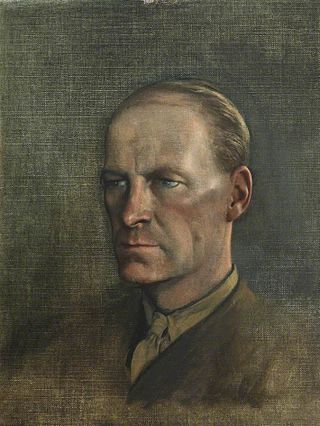
Cultural anthropology is a branch of anthropology focused on the study of cultural variation among humans. It is in contrast to social anthropology, which perceives cultural variation as a subset of a posited anthropological constant. The term sociocultural anthropology includes both cultural and social anthropology traditions.

Cockfighting is a blood sport involving roosters ("cocks"), held in a ring called a cockpit. The first documented use of the word gamecock, denoting use of the cock as to a "game", a sport, pastime or entertainment, was recorded in 1634, after the term "cock of the game" used by George Wilson, in the earliest known book on the sport of cockfighting in The Commendation of Cocks and Cock Fighting in 1607. But it was during Magellan's voyage of discovery of the Philippines in 1521 when modern cockfighting was first witnessed and documented for Westerners by the Italian Antonio Pigafetta, Magellan's chronicler, in the Kingdom of Taytay.

Trance and Dance in Bali is a short documentary film shot by the anthropologists Margaret Mead and Gregory Bateson during their research on Bali in the 1930s. It shows female dancers with sharp kris daggers dancing in trance, eventually stabbing themselves without injury. The film was not released until 1951. It has attracted praise from later anthropologists for its pioneering achievement, and criticism for its focus on the performance, omitting relevant details such as the conversation of the dancers.

Ethnography is a branch of anthropology and the systematic study of individual cultures. Ethnography explores cultural phenomena from the point of view of the subject of the study. Ethnography is also a type of social research that involves examining the behavior of the participants in a given social situation and understanding the group members' own interpretation of such behavior.

Anthropology of religion is the study of religion in relation to other social institutions, and the comparison of religious beliefs and practices across cultures. The anthropology of religion, as a field, overlaps with but is distinct from the field of Religious Studies. The history of anthropology of religion is a history of striving to understand how other people view and navigate the world. This history involves deciding what religion is, what it does, and how it functions. Today, one of the main concerns of anthropologists of religion is defining religion, which is a theoretical undertaking in and of itself. Scholars such as Edward Tylor, Emile Durkheim, E.E. Evans Pritchard, Mary Douglas, Victor Turner, Clifford Geertz, and Talal Asad have all grappled with defining and characterizing religion anthropologically.

Clifford James Geertz was an American anthropologist who is remembered mostly for his strong support for and influence on the practice of symbolic anthropology and who was considered "for three decades... the single most influential cultural anthropologist in the United States." He served until his death as professor emeritus at the Institute for Advanced Study, Princeton.

Dramatis personae are the main characters in a dramatic work written in a list. Such lists are commonly employed in various forms of theatre, and also on screen. Typically, off-stage characters are not considered part of the dramatis personae. It is said to have been recorded in English since 1730, and is also evident in international use.

Gilbert Ryle was a British philosopher, principally known for his critique of Cartesian dualism, for which he coined the phrase "ghost in the machine." He was a representative of the generation of British ordinary language philosophers who shared Ludwig Wittgenstein's approach to philosophical problems.
In the social sciences and related fields, a thick description is a description of human social action that describes not just physical behaviors, but their context as interpreted by the actors as well, so that it can be better understood by an outsider. A thick description typically adds a record of subjective explanations and meanings provided by the people engaged in the behaviors, making the collected data of greater value for studies by other social scientists.
Symbolic anthropology or, more broadly, symbolic and interpretive anthropology, is the study of cultural symbols and how those symbols can be used to gain a better understanding of a particular society. According to Clifford Geertz, "[b]elieving, with Max Weber, that man is an animal suspended in webs of significance he himself has spun, I take culture to be those webs, and the analysis of it to be therefore not an experimental science in search of law but an interpretive one in search of meaning". In theory, symbolic anthropology assumes that culture lies within the basis of the individuals’ interpretation of their surrounding environment, and that it does not in fact exist beyond the individuals themselves. Furthermore, the meaning assigned to people's behavior is molded by their culturally established symbols. Symbolic anthropology aims to thoroughly understand the way meanings are assigned by individuals to certain things, leading then to a cultural expression. There are two majorly recognized approaches to the interpretation of symbolic anthropology, the interpretive approach, and the symbolic approach. Both approaches are products of different figures, Clifford Geertz (interpretive) and Victor Turner (symbolic). There is also another key figure in symbolic anthropology, David M. Schneider, who does not particularly fall into either of the schools of thought. Symbolic anthropology follows a literary basis instead of an empirical one meaning there is less of a concern with objects of science such as mathematics or logic, instead of focusing on tools like psychology and literature. That is not to say fieldwork is not done in symbolic anthropology, but the research interpretation is assessed in a more ideological basis.

Barbara Myerhoff was an American anthropologist, filmmaker, and founder of the Center for Visual Anthropology at the University of Southern California. Throughout her career as an anthropologist, Barbara Myerhoff contributed to major methodological trends which have since become standards of social cultural anthropology. These methods include reflexivity, narrative story telling, and anthropologists' positioning as social activists, commentaries, and critics whose work extends beyond the academy.

Sociological, psychological, and anthropological theories about religion generally attempt to explain the origin and function of religion. These theories define what they present as universal characteristics of religious belief and practice.

Batuan is a village in Bali, Indonesia. It is noted for its artwork and style of painting which originated in the village in the 1930s and has since emerged into a major Balinese artistic style, known as a Batuan painting. It is a major painting center and contains a number of art galleries and cooperative art societies which have played a key role in promoting the art of Batuan. The village is also known for its performance of the ancient Gambuh dance, performed every Full Moon day.

Agricultural Involution: The Processes of Ecological Change in Indonesia is one of the most famous of the early works of Clifford Geertz. Its principal thesis is that many centuries of intensifying wet-rice cultivation in Indonesia had produced greater social complexity without significant technological or political change, a process Geertz terms—"involution". The term, also known as Neijuan, has drawn significant attention in China since its introduction in China's social sciences research, making it one of the most popular buzzwords in China.
Spheres of exchange is a heuristic tool for analyzing trading restrictions within societies that are communally governed and where resources are communally available. Goods and services of specific types are relegated to distinct value categories, and moral sanctions are invoked to prevent exchange between spheres. It is a classic topic in economic anthropology.

The Interpretation of Cultures: Selected Essays is a 1973 book by the American anthropologist Clifford Geertz. The book was listed in the Times Literary Supplement as one of the 100 most important publications since World War Two.

Negara: The Theatre State in Nineteenth-Century Bali is a 1980 book written by anthropologist Clifford Geertz. Geertz argues that the pre-colonial Balinese state was not a "hydraulic bureaucracy" nor an oriental despotism, but rather, an organized spectacle. The noble rulers of the island were less interested in administering the lives of the Balinese than in dramatizing their rank and hence political superiority through large public rituals and ceremonies. These cultural processes did not support the state, he argues, but were the state.
It is perhaps most clear in what was, after all, the master image of political life: kingship. The whole of the negara - court life, the traditions that organized it, the extractions that supported it, the privileges that accompanied it - was essentially directed toward defining what power was; and what power was what kings were. Particular kings came and went, 'poor passing facts' anonymized in titles, immobilized in ritual, and annihilated in bonfires. But what they represented, the model-and-copy conception of order, remained unaltered, at least over the period we know much about. The driving aim of higher politics was to construct a state by constructing a king. The more consummate the king, the more exemplary the centre. The more exemplary the centre, the more actual the realm.
This bibliography of anthropology lists some notable publications in the field of anthropology, including its various subfields. It is not comprehensive and continues to be developed. It also includes a number of works that are not by anthropologists but are relevant to the field, such as literary theory, sociology, psychology, and philosophical anthropology.

There are numerous cultural references to chickens in myth, folklore, religion, language, and literature. Chickens are a sacred animal in many cultures and are deeply embedded in many belief systems and religious worship practices.
Hildred Storey Geertz was an American anthropologist who studied Balinese and Javanese kinship practices and Balinese art in Indonesia.















